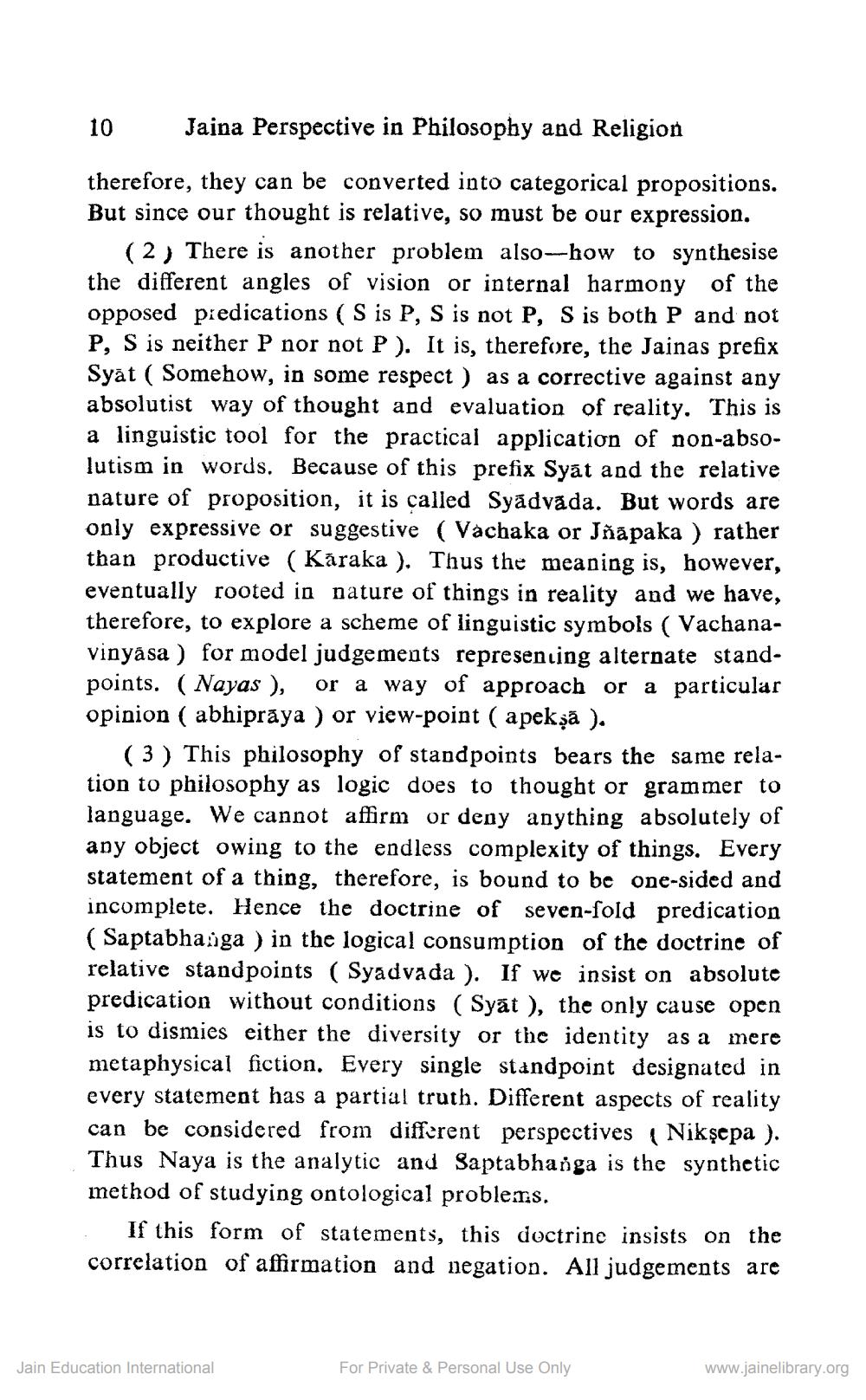________________
10
Jaina Perspective in Philosophy and Religion
therefore, they can be converted into categorical propositions. But since our thought is relative, so must be our expression.
(2) There is another problem also-how to synthesise the different angles of vision or internal harmony of the opposed piedications (S is P, S is not P, S is both P and not P, S is neither P nor not P). It is, therefore, the Jainas prefix Syāt ( Somehow, in some respect ) as a corrective against any absolutist way of thought and evaluation of reality. This is a linguistic tool for the practical application of non-absolutism in words. Because of this prefix Syát and the relative nature of proposition, it is called Syādvada. But words are only expressive or suggestive (Vachaka or Jñapaka ) rather than productive (Karaka ). Thus the meaning is, however, eventually rooted in nature of things in reality and we have, therefore, to explore a scheme of linguistic symbols (Vachanavinyāsa ) for model judgements representing alternate standpoints. ( Nayas ), or a way of approach or a particular opinion ( abhiprāya ) or view-point ( apekšā ).
(3) This philosophy of standpoints bears the same relation to philosophy as logic does to thought or grammer to language. We cannot affirm or deny anything absolutely of any object owing to the endless complexity of things. Every statement of a thing, therefore, is bound to be one-sided and incomplete. Hence the doctrine of seven-fold predication ( Saptabhaaga ) in the logical consumption of the doctrine of relative standpoints (Syadvada ). If we insist on absolute predication without conditions (Syät ), the only cause open is to dismies either the diversity or the identity as a mere metaphysical fiction. Every single standpoint designated in every statement has a partial truth. Different aspects of reality can be considered from different perspectives (Nikşepa ). Thus Naya is the analytic and Saptabhanga is the synthetic method of studying ontological problems.
If this form of statements, this doctrine insists on the correlation of affirmation and negation. All judgements are
Jain Education International
For Private & Personal Use Only
www.jainelibrary.org




